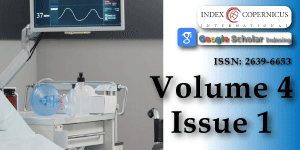Management of Ischemic Stroke during cardiac catheterization: A case report and review of literature
Main Article Content
Article Details
Copyright (c) 2019 Chouaib N, et al.

This work is licensed under a Creative Commons Attribution 4.0 International License.
Sanket KM, Anand BS. Ischaemic Stroke Following Percutaneous Transluminal Coronary Angioplasty (PTCA): A Rare Complication Cardiology. Journal of Clinical and Diagnostic Research. 2014; 8: 1-2.
Magno P, Loureiro J, Marques A, Abreu PF, Candido M, et al. AVC isquémico pericateterismo cardíaco: a propósito de um caso clínico. Rev Port Cardiol. 2007; 26: 1033-1040.
Fuchs S, Stablile E, Kinnaird TD, Mintz GS, Gruberg L, et al. Stroke complicating percutaneous coronary interventions: incidence, predictors, and prognostic implications. Circulation. 2000; 106: 86-96. PubMed: https://www.ncbi.nlm.nih.gov/pubmed/12093775
Segal AZ, Abernethy MW, Palacios IF, BeLue R, Rordorf G. Stroke as a complication of cardiac catheterization: risk factors and clinical features. Neurology. 2001; 56: 975-977. PubMed: https://www.ncbi.nlm.nih.gov/pubmed/11294941
Leker RR, Pollak A, Abramsky O, Ben-Hur T. Abundance of left hemispheric embolic strokes complicating coronary angiography and PTCA. J Neurol Neurosurg Psychiatry. 1999; 66: 116-119. PubMed: https://www.ncbi.nlm.nih.gov/pubmed/9886472
Cronin L, Mehta SR, Zhao F, Pogue J, Budaj A, et al. Stroke in relation to cardiac procedures in patients with non–ST-elevation acute coronary syndrome: a study involving >18,000 patients. Circulation 2001; 104: 269-276. PubMed: https://www.ncbi.nlm.nih.gov/pubmed/11457743
Pettolot G, Bracco J, Barrillon D, Baudouy M, Morand P. Cholesterol embolization. Unrecognized complication of thrombolysis. Circulation. 1998; 97: 15-22. PubMed: https://www.ncbi.nlm.nih.gov/pubmed/9576434
Dukkipati S, O’Neill WW, Harjai KJ. Characteristics of cerebrovascular accidents after percutaneous coronary interventions. J Am Coll Cardiol. 2004; 43: 1161-1167. PubMed: https://www.ncbi.nlm.nih.gov/pubmed/15063423
Pooja Khatri, Robert A, Taylor, MD. The Safety and Efficacy of Thrombolysis for Strokes after Cardiac Catheterization. J Am Coll Cardiol. 2008; 51: 906-911. PubMed: https://www.ncbi.nlm.nih.gov/pubmed/18308158
NINDS rt-PA Stroke Study Group. Tissue plasminogen activator for acute ischemic stroke. N Engl J Med. 1995; 333: 1581-1587.

